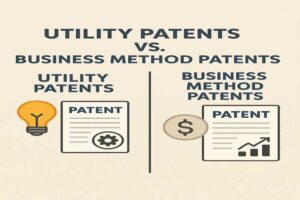Valuing a startup, thus a company without any revenue, can be one of the most challenging tasks in the business world. Traditional valuation methods, such as those based on earnings multiples or discounted cash flow (DCF), rely heavily on a company’s financial track record, which nascent startups typically lack. Therefore, a more nuanced approach is required, one that takes into account non-financial factors like the startup’s potential market, team, product, and intellectual property.
Let’s analyze the various criteria investors, venture capitalists, and financial analysts use to appraise a startup company with no revenue. By the end, we will have a clearer understanding of how startups can be evaluated despite the absence of financial data and revenue streams.
1. The Market Opportunity and Size
One of the key factors in valuing a startup without revenue is assessing the market opportunity. The potential size of the market (Total Addressable Market or TAM) is crucial because it indicates how much revenue the startup could generate in the future if it captures a share of the market.
Key factors to consider include:
- TAM (Total Addressable Market): What is the total demand for the product or service offered by the startup? This gives investors an idea of the upper limit of the company’s future growth.
- SAM (Serviceable Available Market): This refers to the segment of the TAM that the startup can realistically target.
- SOM (Serviceable Obtainable Market): The portion of the SAM that the startup can likely capture in the near term.
A startup with a small SOM may not have the growth potential to justify a high valuation, but one with a large TAM and aggressive strategies for expansion can warrant a higher appraisal.
2. The Founding Team
The strength and expertise of the startup’s founding team is often considered one of the most important factors when appraising a startup without revenue. A capable, experienced, and cohesive team can significantly increase a startup’s chances of success.
Key elements of the founding team to assess:
- Experience and track record: Have the founders successfully built and exited companies in the past?
- Complementary skill sets: Do the members of the team have complementary expertise in key areas such as technology, operations, sales, and marketing?
- Industry knowledge: Do the founders have deep knowledge and networks within the industry they are entering?
- Vision and adaptability: Can the team articulate a clear, compelling vision, and have they demonstrated the ability to pivot in response to market demands?
A strong founding team can overcome initial hurdles and develop a successful business model, which is why many investors assign a high valuation to early-stage startups based largely on the team.
3. Product or Technology
Even without revenue, a startup can demonstrate considerable value through its product, prototype, or technology. If a startup has developed a unique product that addresses an unmet need in the market or has a technological innovation with a strong competitive edge, it can be worth a great deal, even before customers come onboard.
Factors to evaluate include:
- Product-market fit: Does the startup’s product solve a significant problem for its target customers? Early product validation or beta testing with potential users can be a strong indicator of future demand.
- Stage of product development: Is the product still in the concept stage, or has it been developed into a working prototype or beta version? The closer the product is to being market-ready, the higher the startup’s valuation is likely to be.
- Technology: Does the startup have proprietary technology, such as patents or trade secrets, that give it a sustainable competitive advantage? Patents, in particular, can add to the valuation since they create barriers to entry for competitors.
- Innovation potential: Is the product truly disruptive, or is it merely an improvement on existing solutions? Disruptive products tend to attract higher valuations.
4. Traction and Milestones
Even if a startup hasn’t generated revenue, there are other forms of traction that can demonstrate growth potential. Achieving key milestones is a way to show progress, which in turn, reduces risk for investors and justifies a higher valuation.
Some common indicators of traction include:
- User base growth: A growing number of users (even if they are non-paying) shows market interest.
- Partnerships and strategic alliances: Partnerships with established companies can add credibility and open up future revenue opportunities.
- Prototype development: A startup that has advanced from the concept phase to having a functional prototype or beta version of their product shows tangible progress.
- Media and industry recognition: Positive press coverage, awards, or inclusion in influential industry reports can validate the startup’s potential.
- Early-stage funding: If the startup has already raised seed funding from credible investors, it suggests that others see potential in the business.
5. Competitive Landscape
Investors will closely examine the competitive landscape when valuing a startup. The startup must have a clear strategy for differentiating itself from competitors, especially in saturated markets.
Key considerations:
- Number and strength of competitors: Does the startup face a highly competitive market with well-established players, or is it entering a niche with little competition?
- Barriers to entry: Does the startup have high barriers to entry that can prevent others from easily copying their business model? Barriers may include proprietary technology, network effects, or regulatory requirements.
- First-mover advantage: Being the first to market with a unique solution can give a startup an advantage over competitors and justify a higher valuation.
- Competitive moat: Does the startup have a sustainable competitive advantage, such as a unique brand, user base, or intellectual property?
A startup with strong defenses against competitors and the ability to carve out a significant share of the market can warrant a higher valuation.
6. Intellectual Property and Patents
Intellectual property (IP) can be a significant driver of value for startups, particularly those in technology or life sciences sectors. IP can provide the company with a competitive edge and prevent competitors from copying key aspects of its product or service.
Factors to evaluate include:
- Patents: Does the startup hold patents, or are any pending approval? Patents can create legal barriers to entry for competitors and protect the startup’s innovations.
- Trade secrets: Does the startup possess proprietary knowledge, processes, or techniques that are valuable and difficult to replicate?
- Brand value: Does the startup have a recognizable and protected brand? Strong brand identity and loyalty can become valuable assets.
7. Financial Projections and Business Model
While early-stage startups may not have revenue, they can still present financial projections and a clear business model to give investors a sense of how they plan to generate revenue in the future. These projections are typically based on assumptions about market share, user acquisition, pricing strategies, and operational costs.
Key elements to consider:
- Revenue model: Does the startup have a clear path to monetization, such as subscription models, advertising, or transactional fees?
- Cost structure: Has the startup estimated its operational costs, and do these align with the market’s potential to support a profitable business?
- Burn rate: The startup’s current and projected burn rate (the rate at which it is spending its capital) is critical. Startups with a high burn rate and no clear path to revenue may be riskier investments.
- Unit economics: Even without revenue, a startup can estimate key unit economics like customer acquisition cost (CAC) and lifetime value (LTV), which are useful in projecting future profitability.
8. The Stage of the Startup and Funding History
The stage of the startup also influences its valuation. Pre-revenue startups go through different phases of growth, such as seed, early-stage, and growth-stage. Investors will factor in the current phase when determining the valuation.
Key factors include:
- Stage of development: A startup in the idea or concept stage will likely have a lower valuation than one that has a working prototype or minimum viable product (MVP).
- Funding history: Startups that have previously raised capital are typically easier to value, as past valuations and the amount of funding raised serve as reference points.
9. Risk Assessment
Investors use the risk-adjusted return model to account for the uncertainty involved in startup investments. Since pre-revenue startups are inherently risky, the potential upside must be substantial to offset that risk.
Some types of risk include:
- Market risk: Is there a risk that the market will not accept the product or that market conditions will change?
- Technology risk: Is there a risk that the startup’s technology will not work as expected or will be difficult to scale?
- Execution risk: Is there a risk that the startup’s team will not be able to execute the business plan effectively?
Valuing a startup without revenue requires a holistic approach that considers non-financial indicators of success. Factors like market opportunity, the strength of the founding team, product development, traction, intellectual property, and competition all play crucial roles in determining a startup’s value. Though challenging, a thoughtful analysis of these elements can provide investors with a framework for appraising a startup’s potential and deciding whether to invest.







